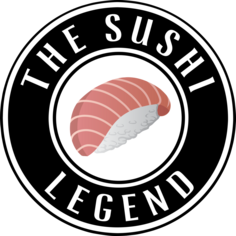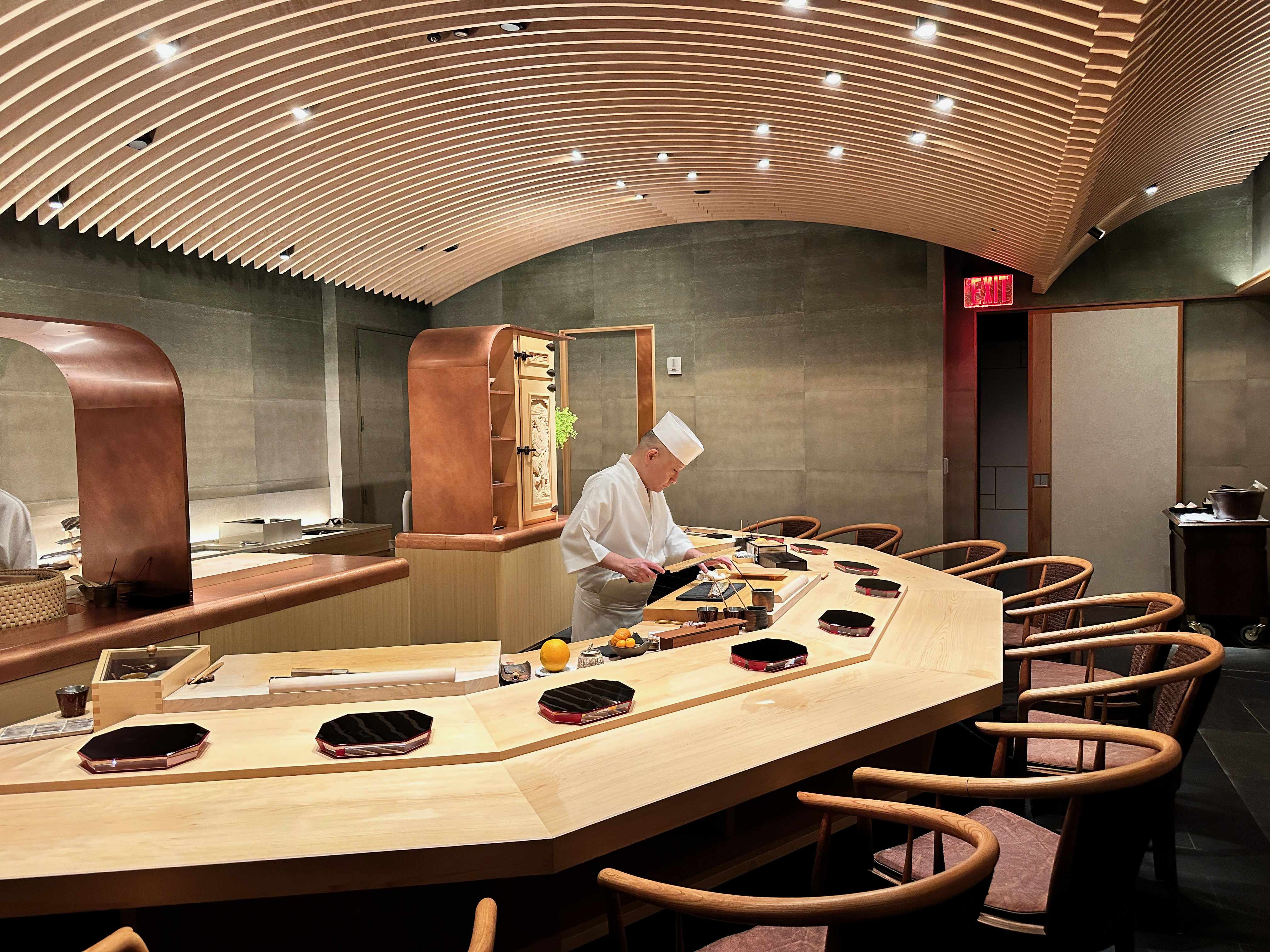I don’t normally write sequels
That’s partially philosophical – they’re never better than the original, and I dare you to find me an example otherwise. You might say The Godfather Part 2, but I’m legally required to remind you about James Caan. Not my choice, just the law.
But the other reason is logistical. There’s simply too many sushiya in New York for a simple blogger to justify a return visit.
Or that used to be the case. But while the volume in New York has grown, the variety hasn’t kept pace. I wrote about what I call the chalkboard omakase last week.
Coincidentally – or maybe not – I recently made a return visit to Sushi Sho.
I wrote about Sho – the three year odyssey, the venerable itamae, the status as one of, if not the single best sushiya in New York City – when I visited the first time back in March.
But I think in this case a second review is useful, and not just because I’m the most narcissistic blogger alive. One of the small criticisms that emerged in Sho’s four months of life were operational; the meal was unevenly paced, the menu structure was confusing, the pricing was bizarre. All of it was exacerbated by the lack of information online; Sho bans photography, a unique decision that I welcomed while recognizing the adverse impact on this blog. And the only news outlet that’s reviewed it so far is the massive media conglomerate, The Sushi Legend. Perhaps you’ve heard of it.
So this will be a mini blog. If you’re looking for the history of Sho, and why the sushiya and its Itamae are so important, read my original blog here.
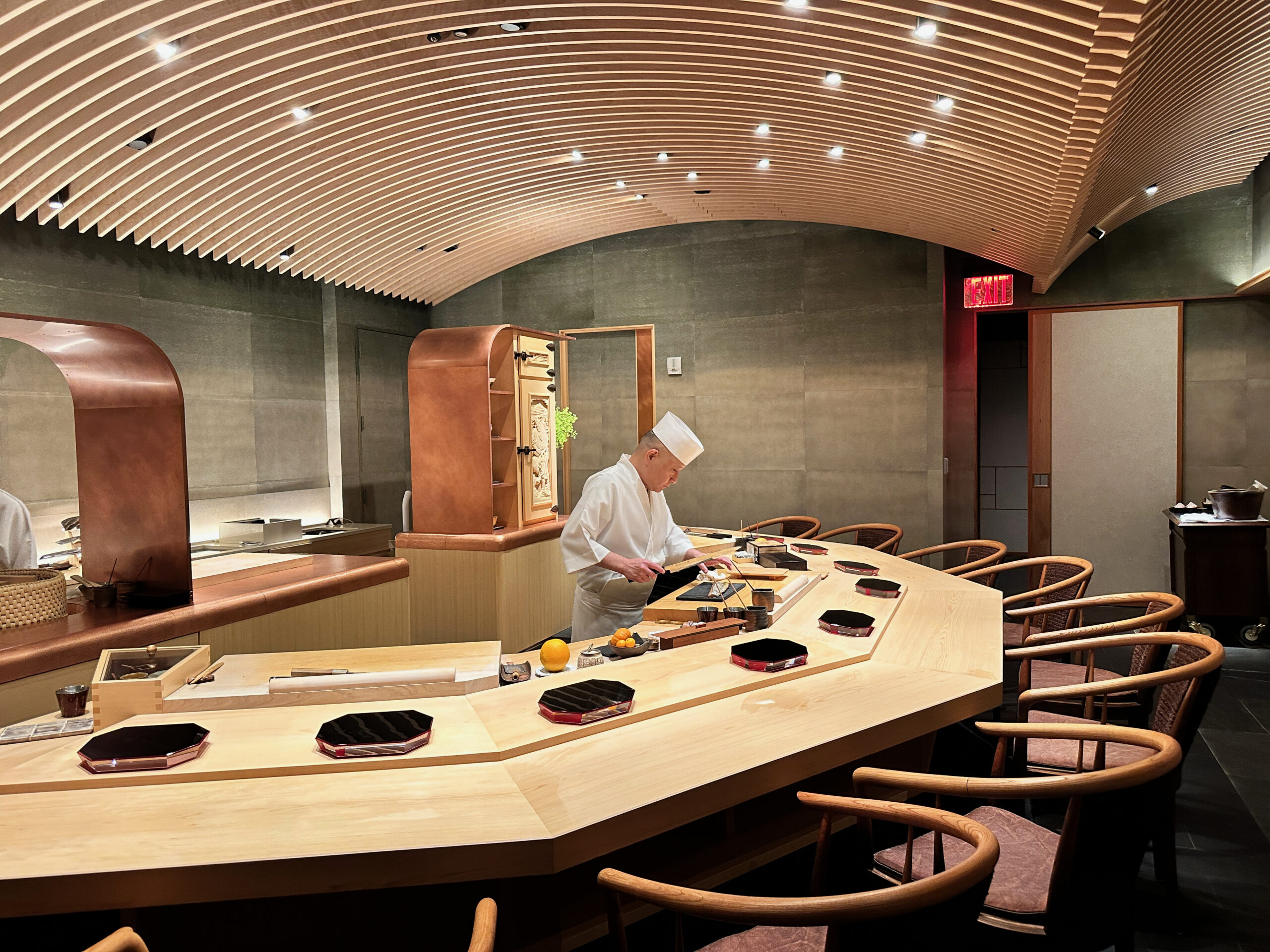
Rare look inside Sushi Sho before dinner service. Pictures are prohibited during the meal.
Let’s first cover what’s changed
First, the price. Nakazawa-san starts with the Omakase, approximately 20 courses for $450, squarely in the four hundo club of NYC. Back in March, the price was $400, though the “good news” is that the quality has increased commensurately; that’s saying something given how much I enjoyed round 1.
What does “quality has increased commensurately” mean?
Good question. Maybe I shouldn’t have used thesauras.
No, Nakazawa-san haven’t gotten better at making sushi in the last 5 months. His team and the sushi itself are still exceptional.
But there were slight refinements around the margins. For example, a signature dish is Izushi. In March, the Izushi was served in a small bowl, with Nishin (herring) and a small spoon. But on visit two, the Izushi has been cleaned up; the dish is now two small bites, one with Masuko (trout roe) and one with Nishin. Same great flavour and unique (very unique) concept, with a more elevated presentation.
There’s a few seasonal delicacies that show up here, including the briny, first of the season, layered shinko (young gizzard shad), a classic edomae neta that requires technical skill to prepare in vinegar. There’s also Aka Uni, sourced from Karatsu, on the island of Kyushu. Hokkaido is more famous as an uni producing region, but anecdotally, Kyushu-based Aka Uni is far rarer in North America.
The menu structure has also been updated
Sushi Sho’s meal is in two parts: the Omakase, which is served at Nakazawa-san’s discretion, and then Okonomi (essentially a la carte), which is at the customer’s. You can order however many of the 20+ okonomi options your heart desires, which led to pacing issues. One customer might be on dessert, while another is on course 13 of the Okonomi. Sho has partially fixed this issue by opening up a tea ceremony room for the finished to sip green tea and eat their dessert. Makes it far less awkward, and the room is beautiful in its own right (picture below, at sushiya’s permission). Eventually, this room will host private groups and other itamae. For now, it’s the green tea ceremony, hosted – fun fact – by Nakazawa-san’s daughter.
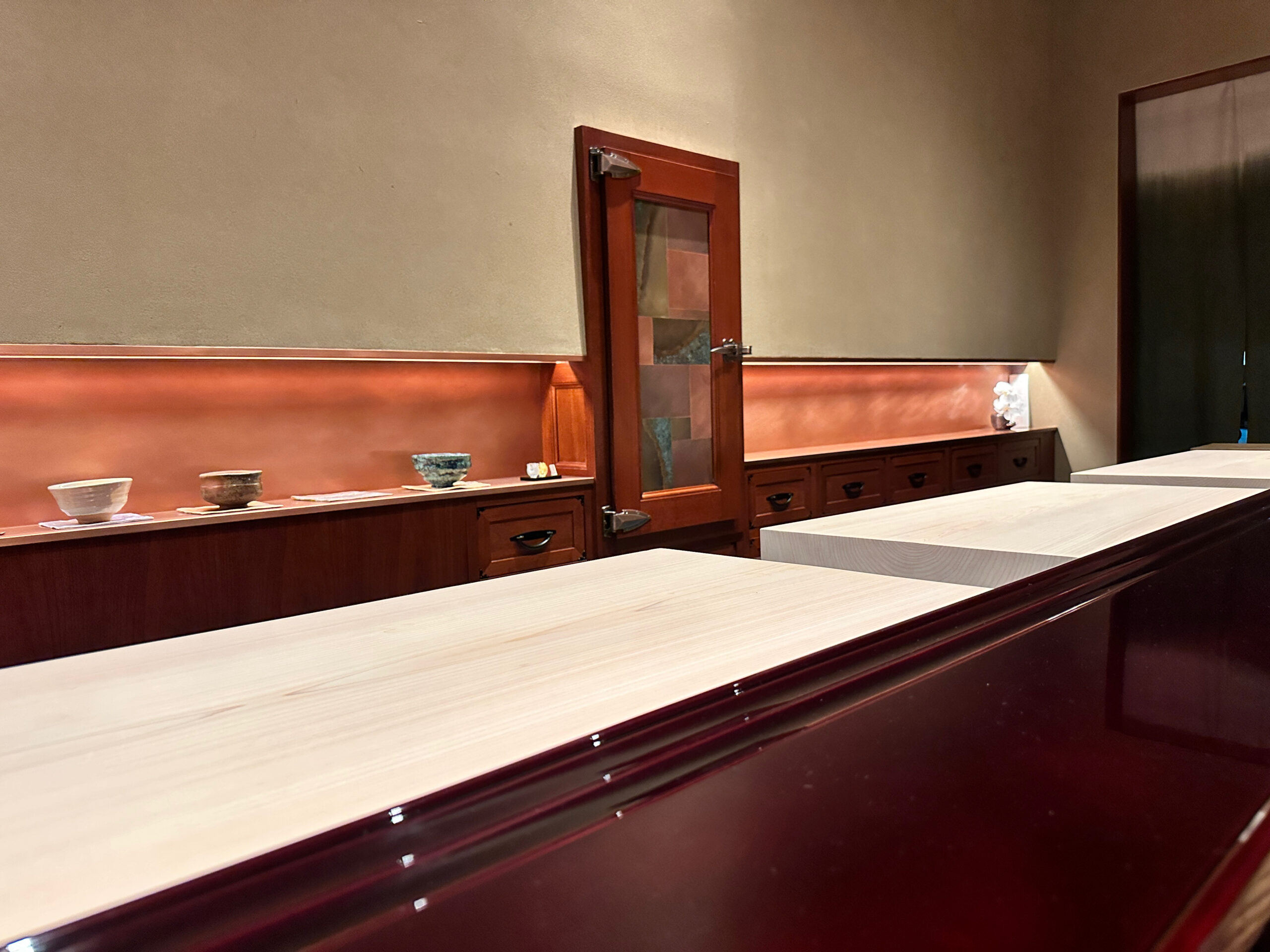
The Tea Room
Here’s the full Omakase from my visit.
Dishes marked with an * appeared in March and and I guess can be considered house specialties, though the menu changes nightly as it should.
- Simmered Awabi from Japan with Uni from Santa Barbara | small dish
- Sagoshi (young spanish mackerel) matsumaezuke style | nigiri
- Sajima Octopus | small dish
- Kinmedai Kobujime (goldeneye snapper cured in konbu) | nigiri
- Shinko (young gizzard shad) | nigiri
- Iwashi (vinegared sardine wrapped local vegetables) | makizushi (style)*
- “sharisotto” – lobster risotto using shari | small dish*
- Shimesaba (vinegered horse mackerel) | nigiri
- Pickled local cucumbers on dried Bonito* | small dish*
- O Toro Zuke (aged marinated o toro for 8 days) | nigiri
- Karasumi (dried mullet roe) with Kazunuko (herring roe) aged for sixty days | sashimi*
- Aka Uni (red sea urchin) | nigiri
- Bettara Zuke (presented as “pickled local vegetables”)*
- Nishin and Masuko Izushi (see above) | small dish*
- Ankimo (monkfish liver) with pickled watermelon (not Suika no Tsukemono – aka pickled watermelon rind) | small dish
- Pickled local peach | small dish
- Kegani with Vinegared Egg Yolk Oboro | nigiri*
- Takuan – Smoked pickled daikon with fermented shari izushi | Small dish*
- Gindara (black cod from Santa Barbara) | nigiri*
- Dried bonito and kombu kelp dashi | Sipping glass*
- Tamago Kansai and Tokyo style | makizushi*
- Green Tea*
- Kuzukiri – traditional dessert from Kyoto. Kudzu noodles, served in ice, with Kuromitsu (Japanese black sugar syrup)*
- Salt Milk Ice Cream with leftover Kuromitsu*
21 courses plus three additional desserts. I’ve seen people say that you need to order many okonomi courses to leave full. BS. I think people confuse traditional sushi with all-you-can-eat sushi (shout out Sakura Garden in Toronto). The goal should be satiation, not being stuffed like a goose at a bordeaux farm. I turned to my dining partner – an eater – after the omakase and asked if he could leave full now. He said yes.
But for the connoisseurs, the Okonomi is worth it
We ordered 10 courses from the list, which ranges in price from $20 to $50. And yes, that is another change. Originally, they were each $35, a pricing model that ignored the cost variance in the courses. I think this was a good change.
Here’s the full Okonomi menu from my July visit
- Aori Ika and Sumi Ika mix
- Tokishirazu (young salmon) | nigiri
- Shima Aji | nigiri
- Meichidai kobujime | nigiri
- Masuko (trout roe) marinated in miso tofu | nigiri
- Tsukimi Ikura (moon-viewing salmon roe, golden colour) | small dish
- Hamaguri (common orient clam, yes that’s really the name)*
- Steamed Megai (Red Abalone)
- Kuro Mutsu (gnomefish) | nigiri
- Kobashira
- Kinmedai (Goldeneye snapper) | nigiri
- Kinmedai skin aburi (seared)
- Chu Toro (shiogama)
- Shimofuri O Toro (you’ll likely hear two “types” of O Toro – Shimofuri – marbled flesh – and Jabara – bellows belly (more sinew))
- Chiagishi Chu Toro (Canada)
- Ohagi
- Zuke
- Soy-marinated toro | makizushi
- Uni from Santa Barbara marinated in Shaoxing wine
- Iwashi | nigiri
- Battera (not exactly nigiri)
- Ankimo | makizushi
- Apple Kanpyo | makizushi
- Matsumae Tekka | makizushi
- Ika Uni Kyu | makizushi
- Umi Unagi
- Oyster ruibe
I’ve highlighted what me and my dining partner ordered in bold above. Shima Aji is in season, and Nakazawa-san matches the presentation to taste by triple layering the striped jack. Visually stunning. Also worth pointing out two different sakura masu (cherry salmon) roe from the Okonomi list, in case they’re available when you go.
The first, Masuko, is truly a must-order, mainly thanks to the preparation of marinating it in miso tofu. I struggled to find the right description and settled on ‘tart, but in a good way’. I welcome suggestions, but this was one of the best dishes I’ve had at Sushi Sho in either visit.
And then there’s the Tsukimi Ikura, so-named because it shows up golden instead of red, apparently thanks to a controlled diet. This fascinating article elaborates.
The Sake Legend returned
Sushi Sho offers a sake omakase for $150. I’m still a neophyte, but I know some of you legends will be curious, so I’ve listed the full pairings below.
- Dassai Blue 23 Junmai Daiginjo Unpasteuried. Dassai Blue, the Hudson Valley, New York produced arm of Dassai, is a sponsor of our 2024 New York City Sushi Guide. Great to see a renowned sushiya using North American made sake. This is an overview of a recent visit I made to their brewery.
- Ohmine 2 Grain Junmai Daiginjo
- Hitakami Yasuke Junmai Daiginjo
- Born Muroka Nama Genshu
- Senkin Urara Junmai Daiginjo
- Afuri “Terra-Yamadanishiki Yamahai”
- Minurosugi Kioke Bodaimoto
- Aramasa “Invisible Pink Unicorn” 2018
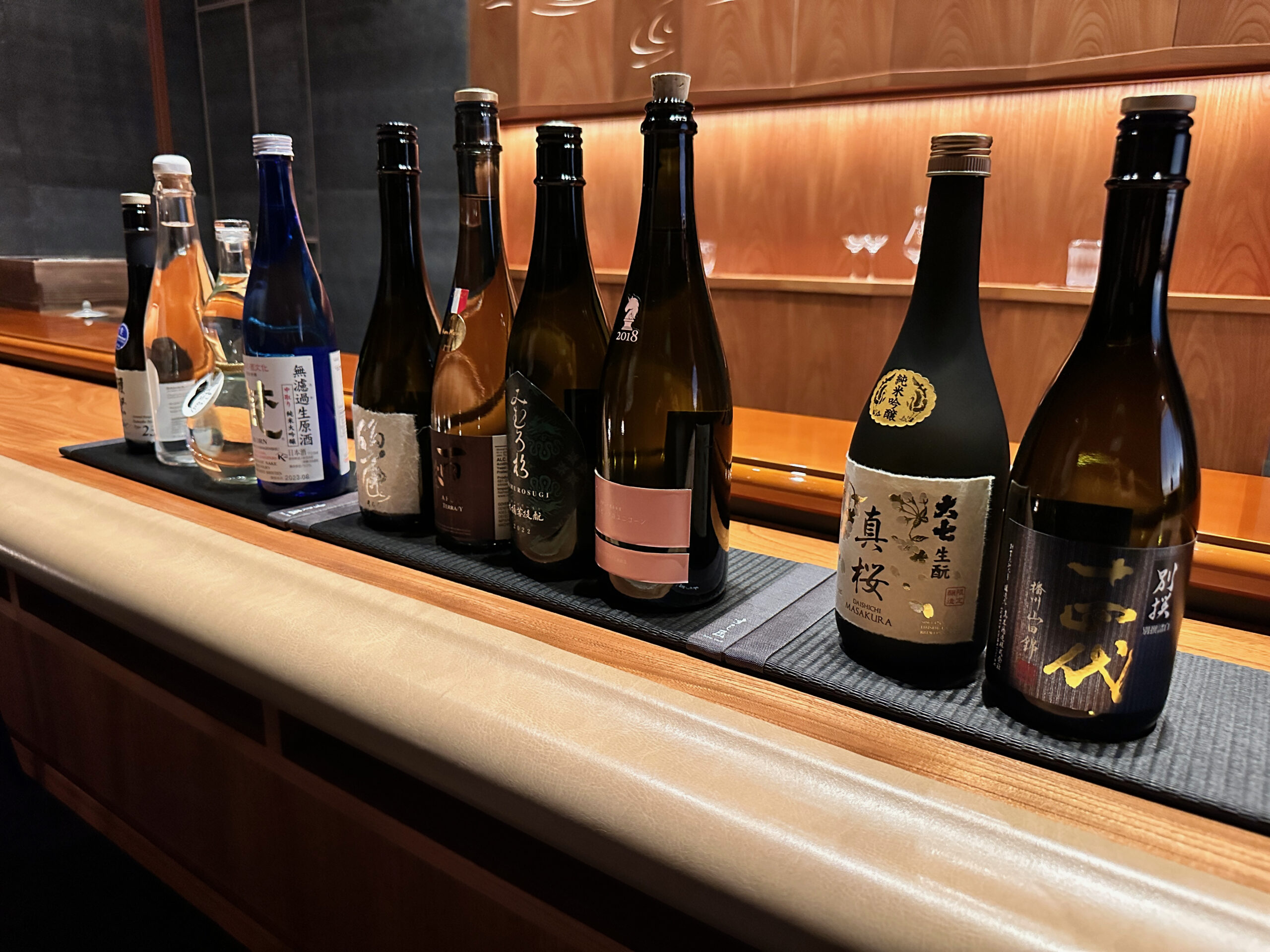
Full lineup of Sake in the “Sake Omakase”
Yes, this is an expensive meal
No sugarcoating. I could see the Maple Leafs in the Stanley Cup for less (technically my dreams are free). $450 for the omakase, but with the add-ons, Sho can reach around $1,400. With drinks and tax, that price approaches $2,000 per person. Not a typo. But few will order the full McCoy, and keep in mind that Sho uses traditional and complicated preservation techniques for the Okonomi courses. They must be served at their optimal time or discarded. The prices undoubtedly reflect that reality.
It’s also hard for me to deride wildly talented individuals – at both sushi and service – getting compensated for their work, especially when there are far more egregious pricing practices. For example, there is a streaming service called Discovery+ that charges $8.99 a month.
The best should be compensated appropriately. And this is truly one of the best sushiya outside of Japan.
Recommended.
